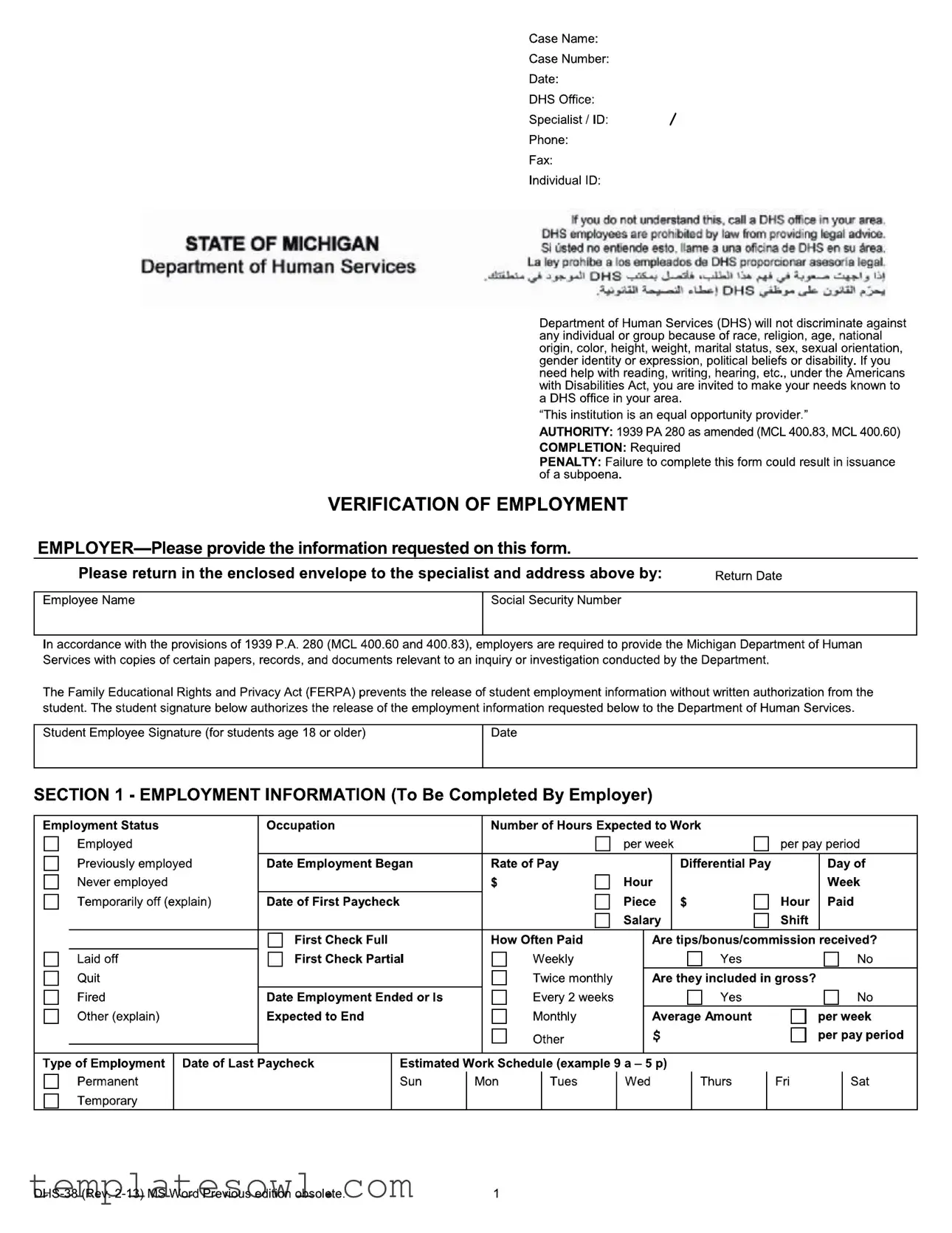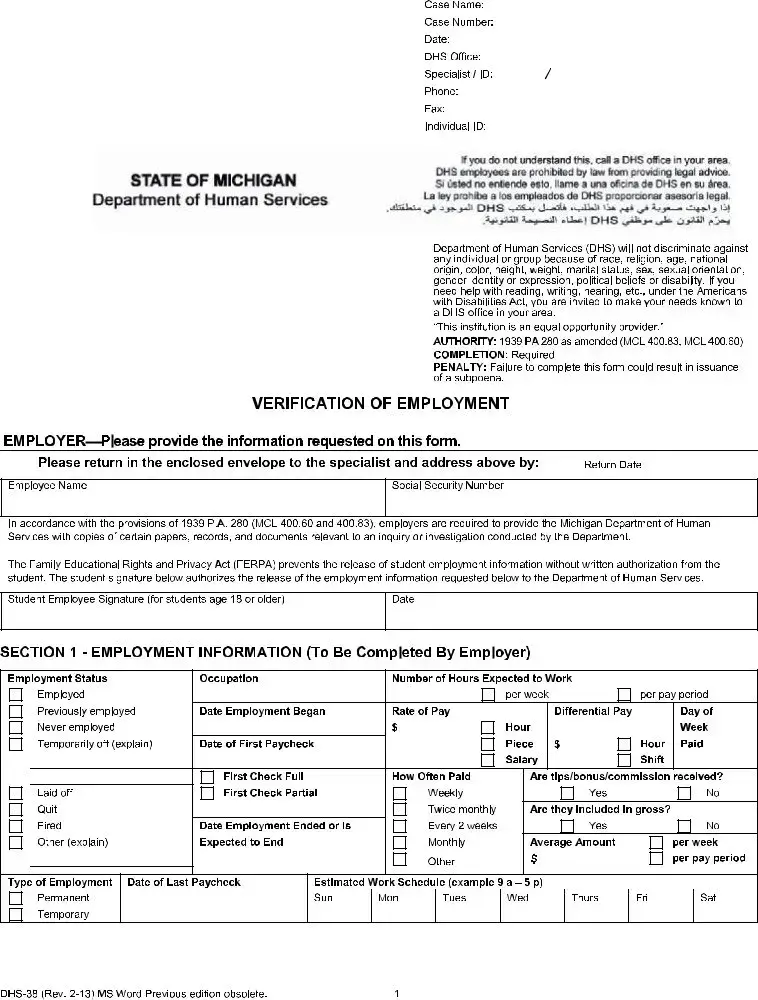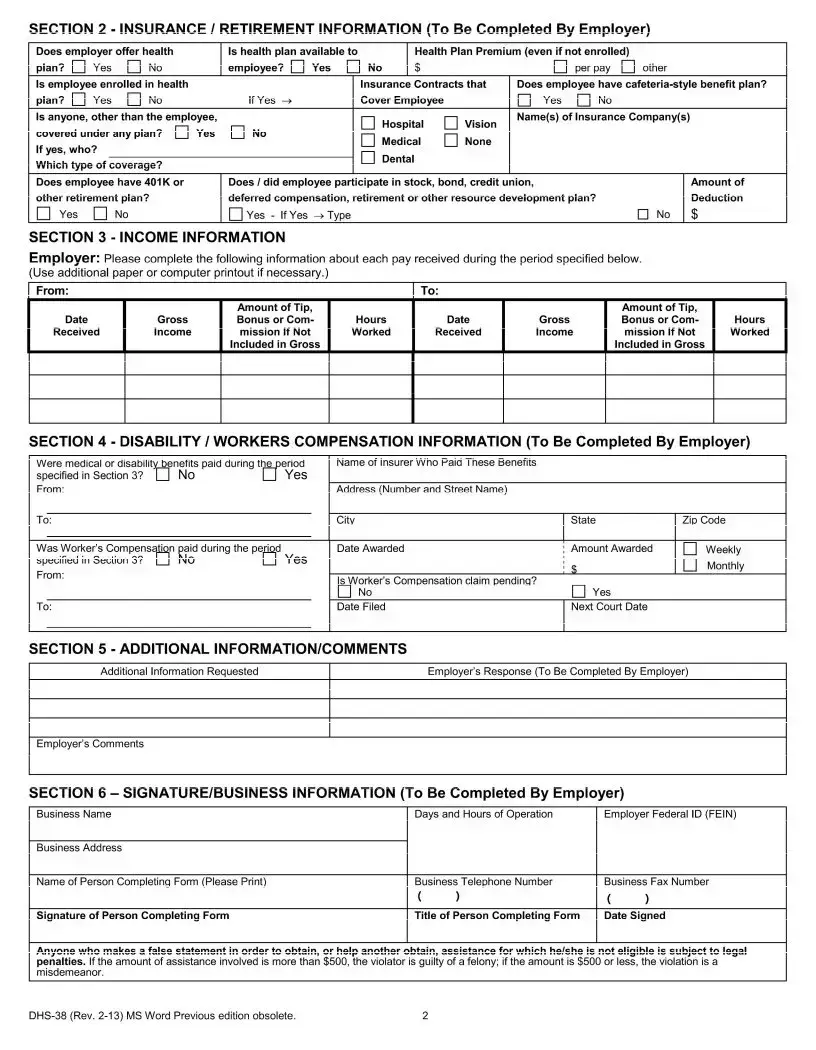What is the purpose of the DHS 38 form?
The DHS 38 form is primarily used by employers to provide necessary information regarding an employee's employment status and income to the Michigan Department of Human Services (DHS). This information is required during inquiries or investigations conducted by the department. Accurately completing this form helps ensure that the DHS can process claims and determine eligibility for various assistance programs effectively.
Who needs to complete the DHS 38 form?
Employers are responsible for completing the DHS 38 form for any employee whose employment status or income information is being requested by the Michigan Department of Human Services. In some cases, this form may also require signatures and information from the employee, particularly for those who are students aged 18 or older. Employers must ensure they fill out all relevant sections, providing clear and precise information to avoid any potential issues.
What happens if the DHS 38 form is not completed?
Failure to complete the DHS 38 form can lead to significant consequences, including the issuance of a subpoena. This means that both the employer and employee may be required to provide further documentation or appear before a legal authority. Therefore, it is crucial to fill out the form accurately and submit it promptly to comply with the request from the Michigan Department of Human Services.
What kind of information is collected on the DHS 38 form?
The DHS 38 form collects various types of information, including the employee's current and past employment status, income details, insurance and retirement benefits, as well as comments or additional information from the employer. Sections of the form request specifics like the rate of pay, hours worked, benefits enrollment, and any additional comments that might assist the DHS in their evaluation of the employee's circumstances.
How is the information on the DHS 38 form protected?
The information provided on the DHS 38 form is handled in accordance with privacy laws. The Family Educational Rights and Privacy Act (FERPA) restricts the release of student employment information without proper authorization. Additionally, the Michigan Department of Human Services is committed to non-discrimination and confidentiality. Sensitive information is safeguarded to ensure that personal data is not disclosed improperly.
Where can I get help if I have questions about the DHS 38 form?
If you have questions or require assistance regarding the DHS 38 form, it is advisable to contact a local DHS office. Department employees are trained to assist you with understanding the form's requirements. However, they are legally prohibited from providing legal advice. Being informed about your rights and seeking clarification will ensure that you complete the form correctly and efficiently.


